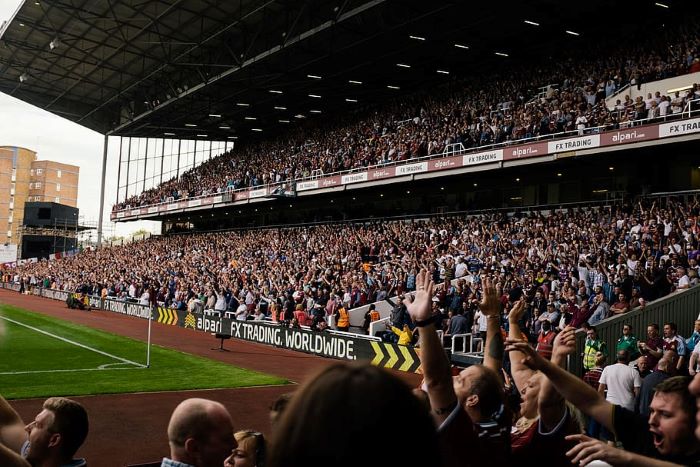Table of Contents
ToggleThe Premier League West Ham Stadium, London Stadium
Name: London Stadium
Location: Queen Elizabeth Olympic Park, Stratford London
Owner: E20Stadium, LLP
Capacity: 62,500 (regulated capacity)
Built: 22 May 2008 – 29 March 2011
Opened: 5 May 2012; 11 years ago
London has many famous and important places, from the historic Tower Bridge to the modern Shard skyscraper, each symbolizing different aspects of the city’s rich history and culture.
Among these landmarks, one structure stands out not only for its distinctive design but also for its remarkable journey from hosting the 2012 Summer Olympics to becoming the home of Premier League club West Ham United. This remarkable transformation belongs to the London Stadium, formerly known as the Olympic Stadium, situated in the Stratford district of London.
London Stadium Story
The journey of the London Stadium began in mid-2007 with the construction land preparation. On May 22, 2008, the construction officially kicked off, marking the ambitious project’s first tangible step. The stadium was built for the 2012 Olympics, but it wasn’t certain that West Ham United would use it after. There were arguments and do-overs in deciding who would get to use it.
The London Stadium is an amazing place, showing off its clever design. It has a round bottom part made from the ground’s soft clay, where 25,000 people can sit. On top of that, there’s a lighter upper part where 55,000 more people can sit. It’s also good for the environment because it uses special concrete and recycled stuff. Even the roof can be taken apart easily.
During the Olympics, the outside of the stadium was covered with a colorful material that had advertisements on it. Also, there were 14 tall towers with bright lights on them. In December 2010, the Prime Minister and the Mayor of London turned on these lights to show that the stadium was ready for the world to see.
From Olympic Games to Becoming the West Ham’s Stadium
The journey of the London Stadium from an Olympic arena to West Ham United’s home wasn’t without its challenges. During London’s bid for the 2012 Olympics, there were talks about creating a multi-purpose stadium. Initially, the government envisioned a post-Olympic athletics-only stadium, but the plans evolved. The ultimate decision to award West Ham United the main tenancy was a contentious one, resulting in a rerun of the tenancy process.
The structural intricacies of the stadium exemplify engineering excellence. The stadium’s distinct tiers, with the ability to hold 80,000 spectators during the Games, are feats of modern construction. The lower tier is a sunken elliptical bowl, composed of low-carbon-dioxide concrete, which reduces its environmental footprint. The use of sustainable materials and transportation methods further highlights the commitment to environmental sustainability.
After the Olympics, the London Stadium underwent a transformation. Plans were set in motion to reconfigure it for multi-purpose use. West Ham United’s involvement was a significant turning point.
In August 2016, one of the most followed Premier League football clubs, West Ham United played their first competitive home game at the London Stadium. The historic occasion marked their move from the Boleyn Ground, their home for over a century. While the transition wasn’t without its challenges, it signaled a new chapter for the club, offering fans an enhanced matchday experience and greater capacity.
Conclusion
The London Stadium was first made for the 2012 Olympics, but it’s become much more than that. It’s now one of London’s top places for sports and shows. It can change and adapt to different uses, like hosting big games, concerts, and more. It shows how the 2012 Olympics left a lasting mark and how places like this can transform to fit different needs in sports and entertainment.


